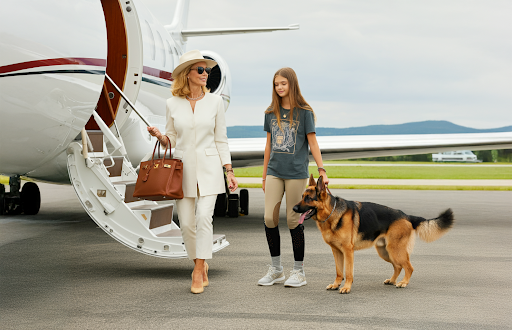
10 Dec Creating Client Personas for Your Elite Show Barn
A client persona is a detailed profile of your ideal customer, based on real data and observations. For elite show barns, these personas are crucial because they help you and your team better understand high-net-worth clients who invest millions in horses, training, and showing.
Personas are created by combining demographic information, behavior patterns, motivations, and pain points of real customers into a single fictional character. Rather than working with abstract data, marketers use these semi-fictional representations to better understand and relate to their target audience’s needs, preferences, and challenges.
For example, instead of just knowing that their target market is “working mothers aged 35-45,” a company might create a persona named “Sarah, the Tech Executive Mom” a 38-year-old software company VP who juggles long work hours with raising two young children, values time-saving solutions, and makes purchasing decisions based on efficiency and quality rather than price. This detailed characterization helps the company make more informed decisions about product development, marketing messages, and customer service approaches that will resonate with similar real-world customers.
Equestrian Persona Examples
1. Janice, the International Amateur Competitor
Demographics:
- Female, 35-50
- $15M+ annual income
- C-suite executive/business owner
- Homes in Connecticut and Wellington
- Frequent business travel to Asia
- Rides early mornings, before workday starts at 8 a.m.
Equestrian Profile:
- Amateur-Owner Hunters
- 2-3 show horses ($150k+ each)
- Shows AA circuit
- Annual horse budget $1M
- Needs personal riding coach to accompany her on business trips
2. Ashley, the Junior Rider Parent
Demographics:
- Parents 45-60
- $20M+ net worth
- Finance/tech industry background
- Based in Wellesley, Mass.
- Active show involvement
Equestrian Profile:
- Multiple horses for different divisions
- Focus on Equitation/Hunters/Jumpers
- Schedule around school commitments
- Values life lessons through riding
- Annual budget $750k+
3. Lois, the Legacy Patron
Demographics:
- Female, 60-75
- Old money/inherited wealth
- Board member of major equestrian organizations
- Philanthropic involvement in sport
- Primary residence in Westchester/Greenwich
- Multiple generations in sport
Equestrian Profile:
- Owns 8-10 show jumpers and hunters
- Focus on developing young prospects
- Partners with select professionals
- Hosts/sponsors major competitions
- Deep industry connections
- Emphasis on classical training methods
- Values tradition and presentation
- Annual investment in sport $2M+
4. Lily, the Olympic Hopeful
Demographics:
- Age 14-17
- Family wealth $100M+
- Lives between Asia/Europe/US
- Private tutoring/flexible schooling
- Multicultural background
- Aspiring YouTube star and fashion model
Equestrian Profile:
- Competing in Jumpers and Dressage
- Olympic goals
- 3-4 horses across divisions
- Year-round showing schedule
- Daily training/fitness program
- Coordinated academic/riding schedule
- Annual budget $1.5M+
Gathering Information
The process of gathering detailed persona information in the equestrian world relies heavily on personal interaction and careful observation. Trainers often gain their most valuable insights during client dinners held during major shows, where conversation flows naturally and clients feel comfortable sharing their needs and preferences. Discussions at ringside provide another intimate setting for understanding a client’s thought process and approach to the sport, while careful observation of clients and at the farm can reveal clients desires and pain points.
Strategy meetings can also be an effective way to gather information, creating a formal space to align on goals and expectations. Client feedback often highlights specific needs that shape these personas. For instance, one client might express the need for a qualified trainer to travel and work with them during an extended business trip to Korea, while another emphasizes the importance of smooth communication with their personal assistant. Some clients prioritize efficiency in their riding schedule, requesting that horses be tacked and warmed up upon their arrival at the farm to maximize their limited time.
To systematically capture and organize this information, a comprehensive documentation system is essential. Each persona type receives its own detailed file, beginning with core requirements. These include specific training preferences, communication needs, scheduling requirements, and show-related goals. Supporting details flesh out the profile with equipment preferences, travel schedules, preferred vendors, and any special requests that help personalize the service.
The documentation system remains dynamic through regular updates, incorporating new client feedback as it arrives. These updates track changing needs and any corresponding service adjustments, carefully noting how these changes impact the overall training program. This living document ensures that the training service continuously evolves to meet clients’ developing needs and preferences, maintaining the highest level of personalized service in the competitive equestrian world.
The Bottom Line
Elite show barns aren’t just providing training – they’re delivering luxury service that centers around horses. Your personas should help you understand and exceed the expectations of the most discerning equestrian clientele.
Remember: Update your personas regularly based on client feedback and changing market needs. Use this information to continually refine your services and facility offerings.
